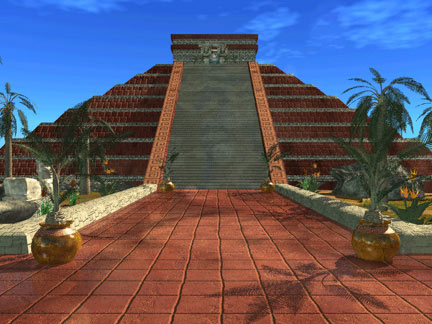 “With nearly one Billion mobile devices purchased (globally) every year, wireless gaming has incredible potential ahead of it and may very well exceed the console/PC market someday”
“With nearly one Billion mobile devices purchased (globally) every year, wireless gaming has incredible potential ahead of it and may very well exceed the console/PC market someday”
Gaming’s gaining gear and is all set for gigantic growth in India. The omnipresence of the mobile device and the gaming capability that handsets possess has resulted in Mobile Gaming surpassing PC and Console gaming (using legally published software) in the country.
When it comes to development and publishing platforms for Mobile Gaming, one of the frontrunners and amongst the most aggressive companies in this space is Qualcomm with its BREW (Binary Runtime Environment for Wireless) platform.
Recently AnimationXpress.com Managing Editor Anand Gurnani interviewed Mike Yuen, Sr. Director, BREW Gaming Group, Qualcomm where the expert and evangelist Yuen shared data, experiences, as well as his perspectives on the future of Gaming, with a special focus on wireless gaming.
Excerpts…
Please elaborate on your role as head of the Gaming Group at QUALCOMM?
As Senior Director of the BREW Gaming Group, I am responsible for managing the day-to-day activities of the team as well as setting the overall strategy and direction. I also act as an evangelist and champion for BREW Gaming, both internally at QUALCOMM and externally to the broader wireless and gaming industries. The BREW Gaming Group is chartered with defining and driving the BREW Gaming experience, as well as ensuring the platform is profitable and viable for game publishers and developers.
BREW Gaming has emerged as the leading platform for mobile gaming, supporting publishers and developers as they leverage the technical and commercial capabilities of the BREW solution to develop, publish, and monetize mobile games. Since the introduction of the BREW solution, more than $700 million has been earned by BREW content providers (as of June 2006) with much of that success achieved by mobile gaming publishers and developers.
We’d love to hear from you about the various roles and the various gaming related projects that you have heralded prior to joining QUALCOMM?
Prior to joining QUALCOMM in 2001, I worked at several game publishers including Accolade (acquired by Infogrames, now known as Atari), GTE Interactive Media, and Hammerhead Entertainment. I also worked at AMD and NCR. I was the product marketing manager for titles such as Star Control 4, Deadlock 2, Timelapse: Ancient Civilizations…The Link to Atlantis, Titanic: Adventure Out of Time, RedJack: Revenge of the Brethren, and Dust: A Tale of the Wired West. My responsibilities included managing all aspects of each title’s marketing and launch plan. I was also involved in some of the production work from both a review and design standpoint.
 Timelapse was GTE Interactive Media’s response to Broderbund’s genre-defining graphical adventure game MYST. We believe we elevated the genre to the next level by using Silicon Graphics workstations (SGIs) with Alias/Wavefront software to render ray traced graphics, which enabled visually impressive bright outdoor scenery versus most games in this genre at this time (circa 1995-1996) took place within internal environments or dark/overcast outdoor environments.
Timelapse was GTE Interactive Media’s response to Broderbund’s genre-defining graphical adventure game MYST. We believe we elevated the genre to the next level by using Silicon Graphics workstations (SGIs) with Alias/Wavefront software to render ray traced graphics, which enabled visually impressive bright outdoor scenery versus most games in this genre at this time (circa 1995-1996) took place within internal environments or dark/overcast outdoor environments.
Developed by Cyberflix, Titanic was also a graphical adventure created using SGIs. For both Timelapse and Titanic, extensive research was undertaken, both in writing the back story as well as the attention to detail in the environments and graphics.
Like Timelapse, Titanic showcased some of the most impressive graphics seen in a PC/Mac CD-ROM game for its time. The blue prints of the Titanic’s sister ship (Olympic), were used along with historical photographs to re-create the ship in full 3D splendor which would allow players to freely roam the famous ocean liner. Titanic went on to sell more than one million copies and was the #6 best-selling PC game in 1998.
What is the future of Wireless gaming? Where are the major opportunities going to arise?
Screen Digest expects the North American mobile gaming market alone to reach $767 million in 2006, and by 2010, Informa forecasts that total to surpass $11 billion. Although these particular statistics focus on the North American market, we believe this incredible growth will be mirrored in other regions around the world, indicating a tremendous upside opportunity is available for the gaming industry. However, in order to succeed, the mobile gaming industry must band together to create broader awareness and improve discoverability among new consumers who are holding a powerful networked game-capable device (i.e., mobile phone) in the palm of their hands without even realizing it.
Strategy Analytics estimates that by the end of 2006, 38% of the world’s population or 2.5 billion people will have a phone, and with nearly one billion mobile devices purchased every year, wireless gaming has incredible potential ahead of it and may very well exceed the console/PC market someday. The existing and future installed based of phones simply dwarfs the installed base of consoles or gaming PCs, so the sheer size of the wireless economy can’t be ignored.
Furthermore, as the underlying technology continues to evolve on mobile devices, over time the minimum baseline performance and capabilities of these devices will continue to rise and subsequently reset to a new level. Today’s high-end device in Japan will be tomorrow’s mass market device in India that a consumer can get for �free� with an operator service contract. Couple this with high-speed low-latency 3G networks, secure wireless digital distribution and established models of purchase such as recurring monthly subscriptions and micro transactions, and the future of wireless gaming looks very promising.
Finally, some influential trends to pay close attention to in the future include the appearance of a more gaming-friendly form factor device that is a phone first and yet can be easily transformed into a Gameboy-like layout; innovation being driven into the industry via true cross platform game designs that take advantage of each respective platform’s unique capabilities; and the ability for a phone to become a �Good Enough Console� (GEC) in emerging markets like Brazil, India, Russia, and China by being �peripheralized� with TV-out (ability to connect the phone to a larger display/TV) and a more traditional video game console controller.
Your comments on the wireless gaming market in India?
India is a prime example of the potential for mobile gaming, as it is demographically representative of many other emerging markets that are alluring to the video game industry. It is estimated that in India, a country of more than one billion people, there is an installed base of only 200,000 video game consoles. Due to high import duties (up to 40 percent) for console hardware and software, much of this hardware is sold through grey market retailers and virtually all of the software is pirated.
The situation is similarly bleak for PC gaming. Though there are an estimated 50 million PCs in India, only four million of these are in households and only one million are believed to be used for gaming. Furthermore, with a robust market for pirated software, an estimated 80 percent of these one million gaming PCs use illegally copied software. So essentially India is a market of over one billion people with only 200,000 PCs playing game software that has been purchased through legal channels, and only 200,000 video game consoles, most of which are sourced from the black market.
But India, like other emerging regions, has quickly embraced the wireless device. India is now the world’s fastest growing wireless market behind China with customers signing up for mobile service at the rate of five million per month.
In recent years, enough mobile devices have been activated in India to allow wireless to easily surpass wireline telephone service. This has provided a critical foothold for mobile gaming, so much so that mobile gaming in India already supersedes console and PC gaming in terms of revenues by a factor of two.
In the future, we expect India to fuel the rapid ascent of gaming in the broader entertainment space. Our vision has the wireless device becoming both the primary entertainment and computing platform in India, while also functioning as a standard wireless phone for daily personal and business use. This is what we refer to as the GEC or â€?Good Enough Console’. In this way, India will be ground zero for true digital device convergence. It will be exciting to see how the market progresses in India in the next 3-5 years.
Three years from now what sort of technology advancement do you predict in wireless gaming and what will the consumer experience be like?
The proliferation of high-speed data networks worldwide will continue to advance premium mobile games, as higher download speeds allow the delivery of larger feature-rich titles in episodic format. This will change the way publishers and developers design their wireless games because they are no longer constrained by a single standalone download, but instead can leverage the network as a virtual hard drive by swapping out assets and content on the fly on an as-needed basis.
Furthermore, high-speed networks in emerging markets enable secure digital delivery of games and content and can help address the mounting issue of piracy that is faced in these regions. For the consumer, higher-speed networks will provide lower latency that enables the ability for 3D real time multiplayer games to be successfully developed and deployed.
I also foresee the rise of GPS as a powerful value-add component when designing new innovative mobile games. GPS hasn’t been exploited to its fullest yet from a game design perspective and I expect it to appear in ARGs (alternate reality games) as well as MMOs in the future. Other technologies like push-to-talk (PTT) will enable games to have in-game voice chat, 3D surround and positional sound will introduce a whole new level of audio experience to consumers, and last but not least, 3D graphics will continue to soar to impressive new heights on mobile devices that rival more traditional gaming units.
From a consumer experience, we’ll have much more complete and immersive experiences on devices. Consumers won’t simply browse a handset catalog, download, and play a game in a solitary fashion. They will be immersed in a much richer experience tightly integrated with communities that can not only reach across regional areas, but ultimately connect up to the world.
